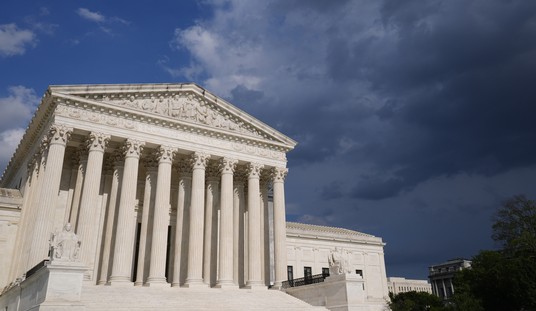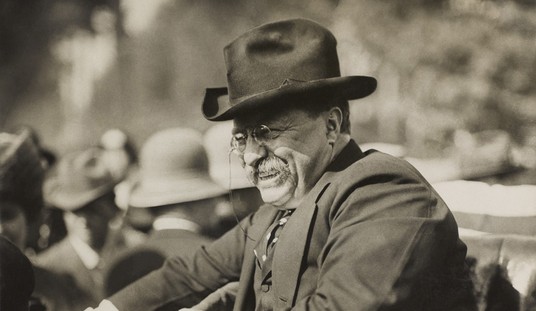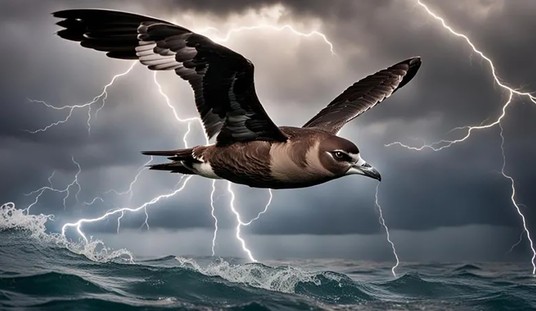Some stories are just so American, so quintessentially "'Merican," that they make you want to go outside, wave the Stars and Stripes, and lead the neighbors in a chant of "USA! USA!" Of course, if I did that here, all I'd get by way of a neighborhood reply would be some curious looks from the chickadees and the squirrels, and maybe a moose, but the sentiment remains in place.
A lot of those events seem to flow from our military. Wartime brings out both the best and the worst in people, but sometimes it presents one of those moments that, well, makes you want to start chanting "USA!" Which brings me to a U.S. Navy ship, the USS Wisconsin (BB-64), an Iowa-class battleship, and the Korean War.
The Iowa-class were the fastest and most effective battleships ever built by the United States, very likely by anyone. Oh, sure, the Japanese built two battleships with bigger guns, the Yamato and the Musashi, both mounting 18" guns, but the Japanese guns had a lower muzzle velocity and slower reloading cycles. That meant an Iowa-class ship could shoot farther and faster, in addition to being able to carry more ammo. Nobody has ever built anything quite like these ships, before or since.
The Wisconsin was built during World War 2, commissioned in 1944. She displaced 58,000 tons and her main armament was impressive: Nine 16/50 Mark 7 guns, mounted in three triple turrets, each capable of tossing a one-ton shell over 20 miles. That's more or less the equivalent of tossing a Volkswagen full of high explosives from the White House to Dulles International Airport. "Big Wisky," as her crew called her, served through the rest of World War 2 with little incident; she was assigned to the 5th Fleet and took part in the pre-invasion bombardment of Japan before the war ended.
After the war, Big Wisky was briefly mothballed, then reactivated for the Korean War, to go do what she did best - toss one-ton projectiles at bad guys. Her mere presence off the North Korea coast made the communist country feel maladjusted, and when the Americans started solving their problems with a suitable application of high explosives, they began to truly worry. Wisconsin even had the distinction of having fired on a stalled North Korean troop train, thus achieving the status of being the only American battleship to sink a train.
Read More: New Chief of Naval Operations Wants Inexpensive Ways to Hit Houthis, and I Have Some Thoughts
Lieutenant Commander Lou Conter, Last Survivor of the USS Arizona, Passes Away Aged 102
Then came March 15th, 1952. The USS Wisconsin, on that day, was operating as usual off the Korean coast, tossing explosive Volkswagens at the communists. But on that day, a North Korean artillery battery tried to defy the great American ship and shot back. A single 155mm shell struck the Big Wisky, striking the gun shield of one of the starboard twin 40mm anti-aircraft gun mounts, causing minor damage and injuring three sailors.
The ship's official history describes the event:
That afternoon, WISCONSIN received the first direct hit in her two-war history when one of four 155mm shells fired by enemy shore batteries hit her deck on the 02 level, just outside the gun shield of the starboard 40mm gun mount which caused little damage but injured three men. Almost as if the victim of a personal affront, WISCONSIN subsequently blasted that battery to oblivion with a 16-inch salvo before continuing her mission.
Now, that right there is a classic American response in typical overwhelming style. That North Korean battery pushed the "Fool Around" button, and in due course was removed in a classically American "Find Out" reply. You have to love as well the dry terminology in the ship's official history: "...blasted that battery to oblivion." Indeed, nine one-ton shells, nine tons of Attitude Adjustment, aimed at one sorry little North Korea artillery battery. They probably could have engaged the battery with their secondary guns, which were 5/38 dual-purpose guns, capable of outranging and engaging the North Korean guns. But we are Americans; go big, or go home.
This led to one of the big ships' escorting destroyers, usually reported as the USS Buck (DD-761), to reportedly send a two-word message to the battleship by blinker light:
TEMPER TEMPER
That's how you do panache, folks. Now, the veracity of that blinker message has been debated. Some report it as fact, while others claim it's just a good story. But regardless of that, it's something that anyone who has worn Uncle Sam's colors could easily see happening, knowing the mindset of the American armed forces. And destroying that battery, with a typically American overwhelming response, that's a matter of official record.
The Wisconsin went on to serve after the Korean War until 1981, when she was again mothballed. She was reactivated in 1986 and in 1991, while I was safely miles inland, provided fire support for Operation Desert Storm. Now she is a museum ship, tied up in Norfolk, Virginia.
And that may be the best epithet one could write for our Iowa-class battleships. While naval history aficionados debate who built the best battleships of the 1941-1945 Pacific War, we should only note that the Iowa-class ships are museums, while the Japanese battleships are now fish habitats.
There's a place in military operations for big guns able to toss one-ton shells 20+ miles, knowing they'll find their mark. Perhaps this is something our newly-renamed Department of War should look into.













